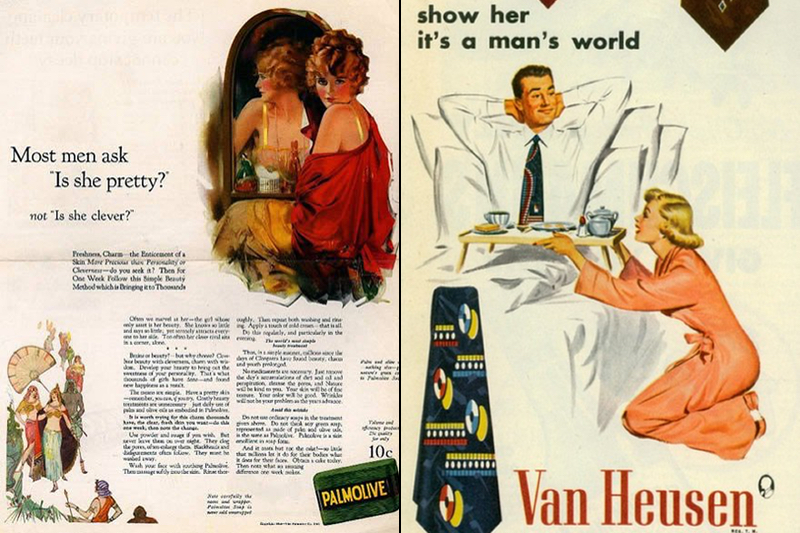A new rule banning advertisements that feature “harmful gender stereotypes”, or are likely to cause “widespread offence” has come into force.
UK regulator Advertising Standards Authority (ASA) first unveiled plans to clamp down on gender bias in 2017, after it found that stereotypes can restrict the choices and aspirations of children, young people and adults.
The ban covers scenarios such as a man’s inability to change nappies, or a new mother prioritising her looks over her emotional wellbeing.
Campaigns implying that a person’s physique is a significant reason for them being unsuccessful in love, or socially, are also prohibited.
However, marketers are not banned from showcasing “glamorous, attractive, successful, aspirational or healthy people or lifestyles”.

If launched today, these vintage adverts would likely be banned.
Other examples of ads that are likely to fall foul of the new regulation include:
- A man with his feet up, while a woman cleans up the mess.
- Adverts that belittle men for carrying out stereotypically ‘female’ roles.
- An advert that emphasises the contrast between boys and girls stereotypical personality traits, such as ‘daring’ versus ‘caring’.
Guy Parker, CEO of the ASA, said: “Our evidence shows how harmful gender stereotypes in ads can contribute to inequality in society, with costs for all of us.
“Put simply, we found that some portrayals in ads can, over time, play a part in limiting people’s potential.
“It’s in the interests of women and men, our economy and society that advertisers steer clear of these outdated portrayals.”
The ASA said it is pleased with how the industry has responded to the new rule and that is will judge complaints on a case-by-case basis to examine the content and context of the advert.
